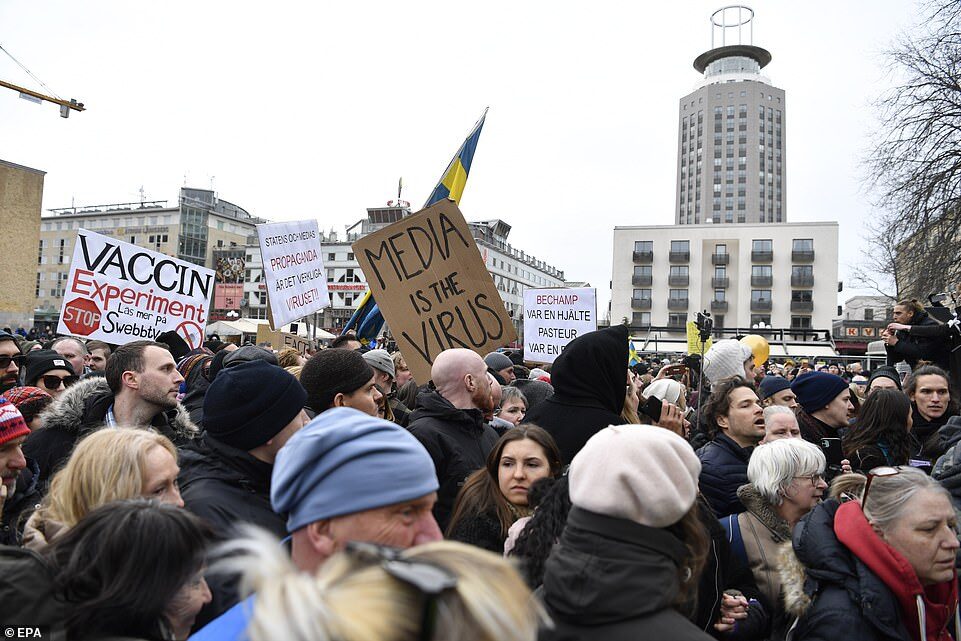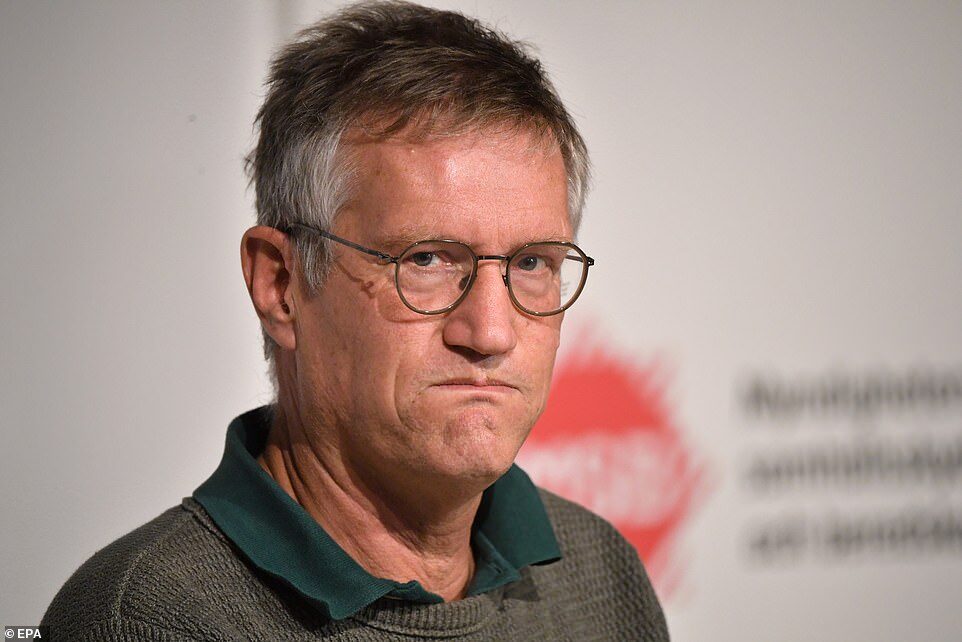
Comment: For many months Sweden was a model case for the world in demonstrating how unnecessary lockdowns were in addressing the virus. People lived normal lives and life went on as usual - in defiance of the totalitarian measures much of the West has taken.
But then something happened: Sweden got pressured to "get with the program". And now, sadly, this:
Hundreds of anti-lockdown protesters clashed with police in Stockholm on Saturday as they took to the streets in defiance of Sweden's coronavirus ban on gatherings.
Swedish police dispersed opponents of coronavirus measures that came after the government - which initially took a hands-off approach to Covid-19 rules - tightened restrictions further as cases continue to rise.
The tighter measures come after Sweden this week reported a ten percent rise in the number of Covid-19 cases for a third week in a row, increasing fears that the country is in its third wave of the virus.
Police blocked a bridge in the centre of the city and said on their website they were in dialogue with organisers to persuade demonstrators to disperse. TV images showed police shoving some protesters, while the police said one officer had been slightly injured and taken to hospital.
Police have taken the decision to break up the non- authorised gathering which is ongoing,' Stockholm police said on their website on Saturday.
Earlier this week, protest organiser Filip Sjöström told local media that he was expecting around 2,000 people to join the demonstration, which had been announced on Facebook.
TV images showed hundreds of people had gathered. According to Swedish daily Dagens Nyheter, demonstrators had travelled from several parts of Sweden, which has a ban on public gatherings of more than eight people.
Sweden, which has 10 million inhabitants, registered 4,831 new coronavirus cases on Friday, and 26 new deaths, taking the death toll to 13,003.
The deaths registered have occurred over several days and sometimes weeks.
Sweden's death rate per capita is many times higher than that of its Nordic neighbours' but lower than in several European countries that opted for lockdowns.
The government said last month that it would cut opening hours for restaurants, bars and cafes and tighten limits on the number of people allowed in shops, in a bid to ward off a third wave of the COVID-19 pandemic.
The centre-left government has gradually tightened restrictions since late last year after initially keeping most schools, restaurants and businesses open, relying primarily on voluntary measures.
Sweden's Public Health Agency warned on Monday the country is heading for a third coronavirus wave, with greater restrictions possibly being needed to slow the spread of the virus.
The number of new Covid-19 cases being reported in Sweden has rose by ten per cent for the third week in a row - with intensive care units beginning to strain.
A number of new restrictions were put in place on Monday to help curb the potential third wave, including limited opening hours for shops and restaurants; the number of people allowed in shops and gyms were slashed and a maximum of eight people are allowed to meet at one time.
Despite this, in a press release, epidemiologist Anders Tegnell said that a third wave is imminent in Sweden if the current restrictions are not followed, Aftonbladet reports.

Sweden's death rate per capita is many times higher than that of its Nordic neighbours' but lower than in several European countries that opted for lockdowns.
In preparation for the third wave, Sweden's PHA has created three possible scenarios for the spread of Covid-19 until May 2021, labelled zero, one and two.
In scenario zero, it is assumed that the contacts remain at the same low level as during Christmas and New Year.
In scenario one, the contacts correspond to the level during the autumn of 2020, while in scenario two, the increase in contacts is faster than in the autumn.
'The first scenario is a bit overplayed already. It was assumed that we would hold back our contacts even more,' Anders Tegnell said.
'We do not seem to be there. It looks like we are really on our way to a third wave.'
With Sweden already heading towards scenarios one and two, more restrictions are likely to be enforced, though Tegnell said Monday he was unable to outline where new measures would be implemented.
Instead he suggested that any new restrictions would be in response to relevant areas in which a large spread of Covid-19 occurs.
However, one measure which has been proposed, is to set a maximum limit on the number of people admitted into shopping malls and department stores to just 500.
Speaking on the impact that vaccinations could have on the spread of coronavirus, Tegnell said that it will have little effect on the spread of the virus but would help keep the number of hospitalisations down.
On Friday, Sweden gave the green-light for the AstraZeneca Covid-19 vaccine to be given to people over the age of 65.
'There are now three studies conducted in Britain on the AstraZeneca vaccine which show it is as effective as other vaccines that have been approved and works for people even over the age of 80,' " the Public Health Agency said in a statement.



[Link]
[Link]